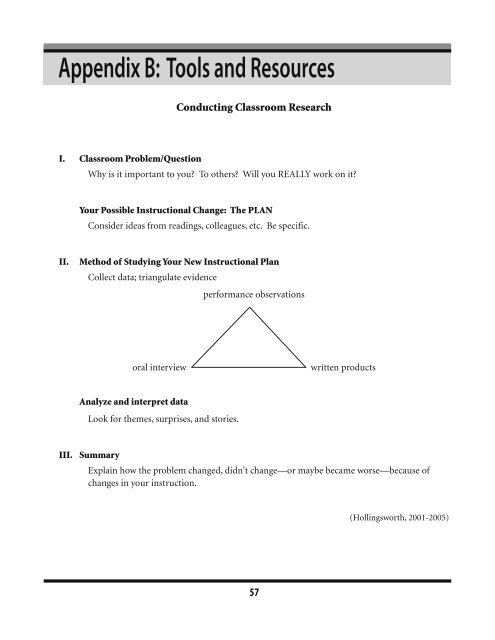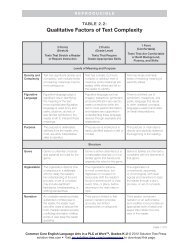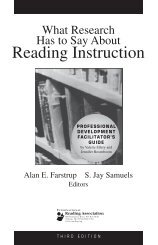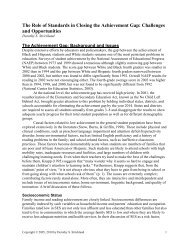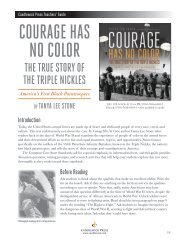A Practical Guide to Action Research for Literacy Educators
A Practical Guide to Action Research for Literacy Educators
A Practical Guide to Action Research for Literacy Educators
You also want an ePaper? Increase the reach of your titles
YUMPU automatically turns print PDFs into web optimized ePapers that Google loves.
Appendix B: Tools and Resources<br />
Conducting Classroom <strong>Research</strong><br />
I. Classroom Problem/Question<br />
Why is it important <strong>to</strong> you? To others? Will you REALLY work on it?<br />
Your Possible Instructional Change: The PLAN<br />
Consider ideas from readings, colleagues, etc. Be specific.<br />
II.<br />
Method of Studying Your New Instructional Plan<br />
Collect data; triangulate evidence<br />
per<strong>for</strong>mance observations<br />
oral interview<br />
written products<br />
Analyze and interpret data<br />
Look <strong>for</strong> themes, surprises, and s<strong>to</strong>ries.<br />
III. Summary<br />
Explain how the problem changed, didn't change—or maybe became worse—because of<br />
changes in your instruction.<br />
(Hollingsworth, 2001-2005)<br />
57


